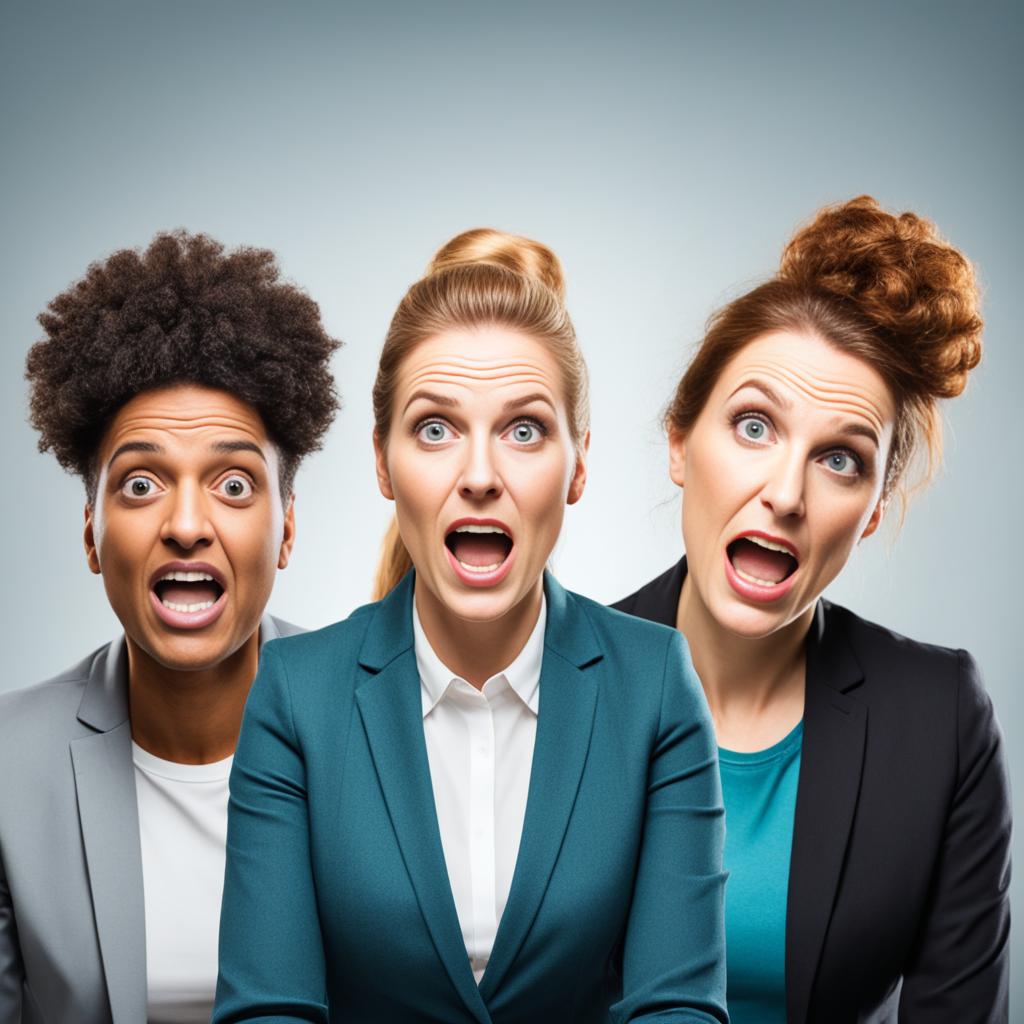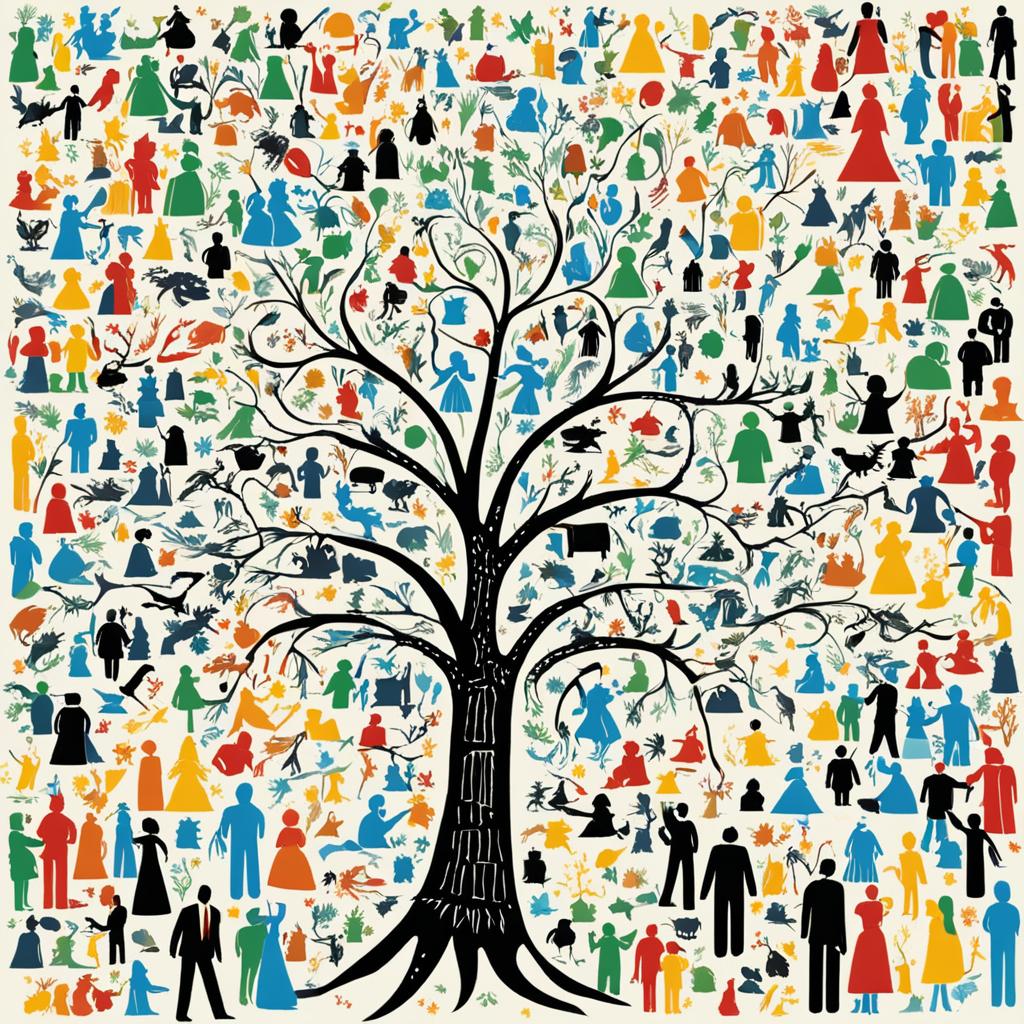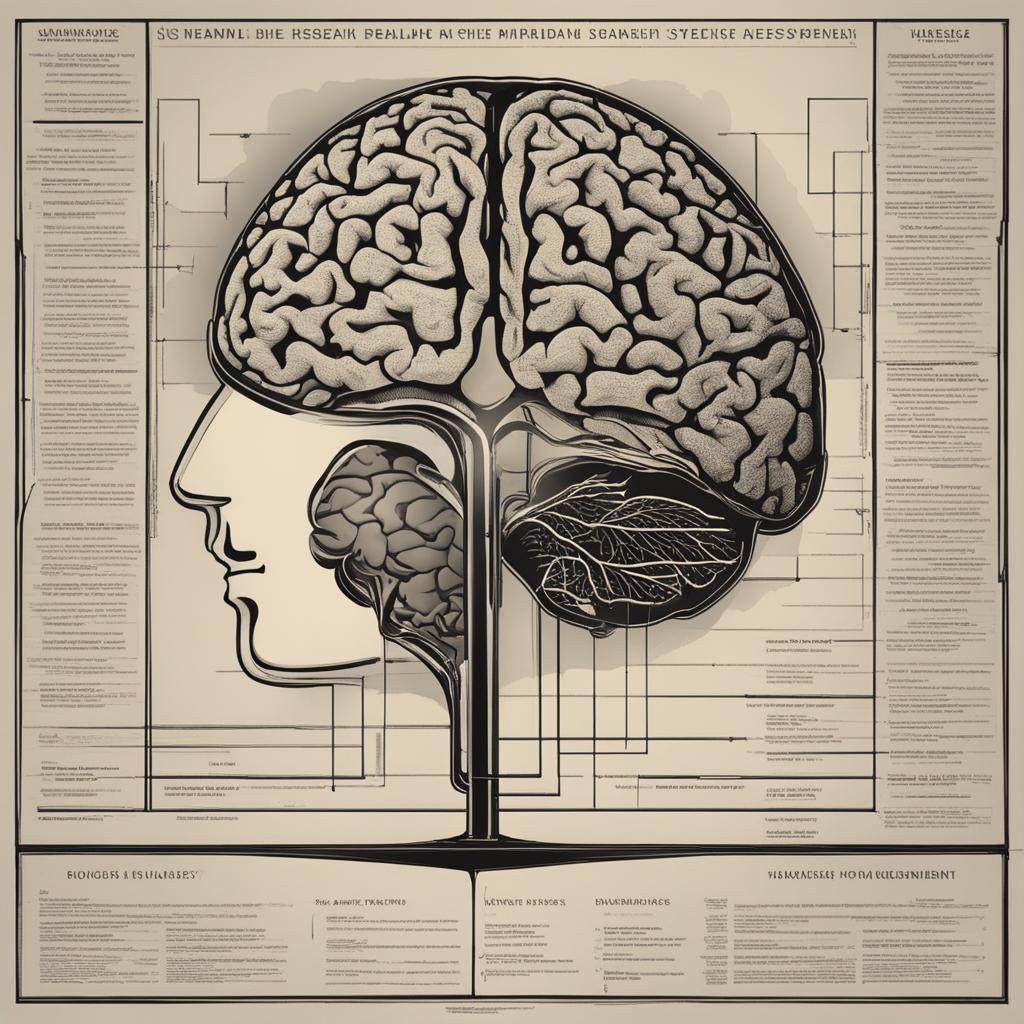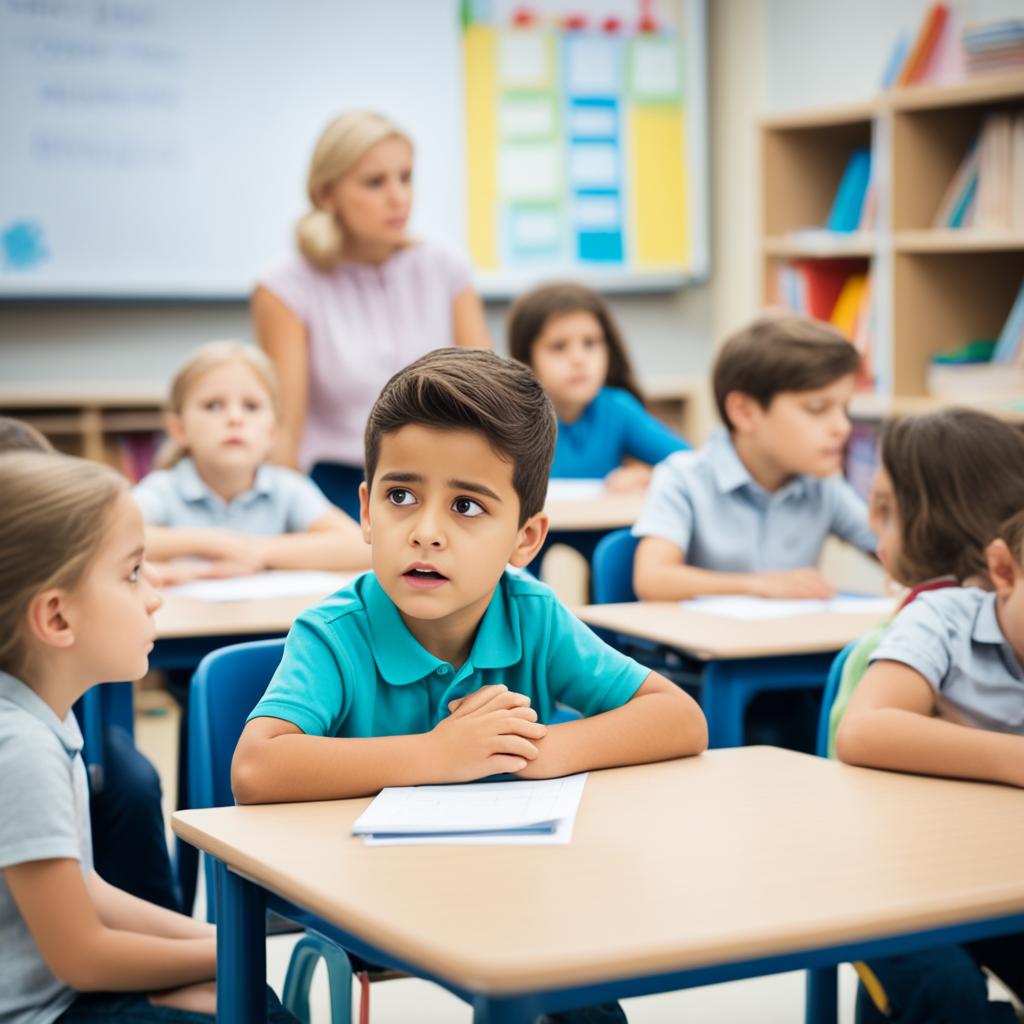Did you know that prejudice and discrimination are deeply rooted in human psychology, affecting individuals and society at large? Understanding the complexity of these phenomena is essential for creating a more inclusive and equitable world. In this article, we dive into the realm of social psychology to explore the origins, consequences, and strategies for combating prejudice and promoting acceptance. Let’s unravel the intricate web of bias and stereotypes to foster a more tolerant and understanding society.
Defining Prejudice and Discrimination
Prejudice and discrimination represent two interconnected concepts that have a significant impact on individuals and society as a whole. While they share similarities, it is essential to understand their distinct definitions and how they manifest in various contexts.
Prejudice refers to preconceived opinions or attitudes formed about a person or a group based on stereotypes, beliefs, or biases. It involves making judgments about individuals without considering their individual characteristics or abilities. Prejudice can be rooted in social, cultural, or personal factors, and it often leads to biased treatment and unfair assumptions.
On the other hand, discrimination involves the unequal treatment or exclusion of individuals or groups based on certain characteristics, such as race, gender, religion, or nationality. It is the action or behavior that results from prejudice, and it can occur at an individual or systemic level. Discrimination can manifest in various ways, including denial of opportunities, unequal access to resources, or unfair treatment in legal, educational, or employment settings.
Both prejudice and discrimination have wide-ranging consequences. They can perpetuate social inequalities, perpetuate stereotypes, limit social mobility, and create barriers to equal opportunities. In turn, this can negatively impact individuals’ well-being, mental health, and sense of belonging.
Manifestations of Prejudice and Discrimination
Prejudice and discrimination can emerge in various contexts and affect different social groups. They can be rooted in factors such as race, ethnicity, gender, age, sexual orientation, disability, or socioeconomic status. Historical, cultural, and institutional factors can shape the manifestation of prejudice and discrimination, leading to unique challenges for marginalized communities.
For example, racial prejudice and discrimination have been pervasive throughout history and continue to impact individuals and communities of color. Similarly, gender-based discrimination often restricts women’s opportunities for career advancement and equal pay. LGBTQ+ individuals face prejudice and discrimination, leading to challenges in accessing healthcare, housing, and employment.
“Prejudices are the chains forged by ignorance to keep humans apart.” – Marguerite Gardiner


Understanding the definitions and manifestations of prejudice and discrimination is crucial for promoting equality, fostering inclusivity, and challenging biased attitudes and behaviors. In the following sections, we will delve deeper into the theories behind the origins of prejudice, explore cognitive processes and stereotyping, examine implicit bias, and discuss strategies for reducing prejudice and discrimination.
Theories on the Origins of Prejudice
In understanding prejudice, social psychology provides valuable insights into the origins and development of biased attitudes and beliefs. Various theories have been proposed to explain how prejudice emerges and how it is maintained within individuals and societies.
Social Learning Theory
One influential theory in social psychology is the Social Learning Theory, which suggests that prejudice is learned through observation, imitation, and reinforcement. Individuals acquire prejudiced beliefs and attitudes by observing the behavior and attitudes of others, particularly influential figures such as family members, peers, and the media.
According to Social Learning Theory, prejudice may be perpetuated through the process of modeling, where individuals imitate the behavior they witness and internalize the associated beliefs and biases.
Social Identity Theory
Social Identity Theory offers another perspective on the origins of prejudice. According to this theory, individuals derive their self-esteem and sense of identity from the groups they belong to, such as ethnicity, religion, or nationality. Prejudice arises when individuals develop a strong ingroup identity and perceive members of other groups as a threat or inferior.
As Social Identity Theory suggests, prejudice can result from individuals seeking to enhance their own self-esteem by denigrating outgroup members and emphasizing the superiority of their ingroup.
Cognitive Dissonance Theory
Cognitive Dissonance Theory proposes that prejudice can arise as a way to reduce cognitive discomfort when there is a conflict between an individual’s beliefs and their behavior. To alleviate this discomfort, individuals may adjust their beliefs to align with their behavior, leading to the justification and perpetuation of prejudiced attitudes.
Ingroup-Outgroup Bias
Ingroup-Outgroup Bias, also known as the ‘Us vs. Them’ mentality, is an influential concept in social psychology that contributes to the development of prejudice. It suggests that individuals tend to favor members of their own group (ingroup) over members of other groups (outgroup), leading to biases and discriminatory behaviors.
As research has shown, the ingroup-outgroup bias can arise even in minimal group situations, where individuals are randomly assigned to a group, highlighting the instinctual nature of this cognitive bias.


By exploring these different theories, we gain a deeper understanding of how prejudice forms and is perpetuated in societies. The origins of prejudice are rooted in complex psychological and sociological factors, which highlight the importance of addressing biases at both individual and societal levels.
Cognitive Processes and Stereotyping
When it comes to understanding stereotypes, delving into the cognitive processes underlying them is crucial. Stereotypes are cognitive structures that shape our perceptions and judgments about individuals or groups based on their membership in certain categories. These mental shortcuts allow us to make quick judgments and predictions, but they can also lead to biased thinking and discriminatory behaviors.
Stereotypes form through a process that involves categorization, generalization, and schema activation. When we encounter new information, our brains automatically categorize it based on existing schemas or mental templates. This categorization helps us navigate the complex social world by organizing information into meaningful groups.


Once a stereotype is activated, it influences our perceptions and behaviors. We tend to interpret information and behaviors in a way that confirms our preexisting beliefs about a particular group. For instance, if we hold the stereotype that women are not good at math, we may perceive a discrepancy between a woman’s performance in a math test and her actual abilities.
Cognitive biases also play a role in reinforcing stereotypes. Confirmation bias, for example, leads us to selectively recall and interpret information that supports our existing beliefs while ignoring contradictory evidence. In-group bias, another cognitive bias, makes us favor members of our own social group over those from different groups, perpetuating stereotypes and fostering prejudice.
“Stereotypes are mental shortcuts that allow us to make quick judgments, but they can also lead to biased thinking and discrimination.” – Dr. Jane Matthews, Social Psychologist
The Influence of Stereotypes on Perceptions and Behaviors
- Stereotypes influence how we interpret and remember information.
- Stereotypes affect our expectations and judgments about others.
- Stereotypes can shape our behavior towards individuals or groups.
- Stereotypes can lead to discrimination and exclusion.
Understanding the cognitive processes involved in stereotyping is crucial for challenging and combating stereotypes. By recognizing our own biases and cultivating awareness of the limitations of stereotypes, we can strive to treat individuals as unique human beings rather than mere representatives of a group.
Implicit Bias and Unconscious Prejudice
In the realm of bias and prejudice, there exists a powerful yet often unnoticed force within us: implicit bias. Research has highlighted how biases can operate beneath our conscious awareness, influencing our thoughts, feelings, and behaviors. These implicit biases, rooted in our unconscious minds, shape our perceptions of others and contribute to prejudiced attitudes and actions.


Implicit biases are subtle and automatic associations that our brains make between certain groups of people and specific traits or characteristics. They are usually formed through societal messages, media portrayals, and personal experiences, and can be influenced by cultural and social factors.
What makes implicit biases particularly concerning is that they often contradict our consciously held beliefs and values. Even individuals who actively reject prejudice and discrimination may still possess implicit biases. These biases can impact our interactions with others, influencing our judgments, decisions, and behavior in subtle and unintended ways.
Research has shown that implicit biases can affect various aspects of our lives, from everyday interactions to more consequential decision-making processes. These biases can impact hiring decisions, criminal justice outcomes, medical diagnoses, and even how teachers evaluate their students. Implicit biases can perpetuate existing stereotypes, reinforce systemic discrimination, and undermine the principles of fairness and equality.
The Impact of Implicit Bias
Implicit biases can subtly shape our behavior, leading to discriminatory actions and perpetuating social inequalities. These biases influence how we perceive others, the assumptions we make about them, and the actions we take towards them.
Implicit biases can unintentionally influence our behavior, leading to differential treatment of individuals based on their race, ethnicity, gender, age, or other social categories. These biases can undermine the principles of fairness, equality, and justice, perpetuating social disparities and marginalizing individuals within society.
For example, studies have found that implicit biases can lead to longer response times in deciding to shoot or not shoot an armed individual based on their race. In education, implicit biases can affect the disciplinary actions taken towards students from different racial or ethnic backgrounds. These biases can also impact healthcare professionals, leading to disparities in the diagnosis and treatment of patients belonging to marginalized groups.
Awareness of implicit biases is crucial for dismantling prejudice and discrimination. By recognizing our own biases, we can strive to mitigate their impact and make more fair and unbiased decisions. Educating ourselves about implicit biases and implementing strategies to counteract them can help promote inclusivity, diversity, and social equality.
- Recognize and acknowledge our own biases.
- Challenge stereotypes and preconceived notions.
- Engage in intergroup contact and diverse experiences.
- Implement bias-reducing interventions and trainings.
- Promote inclusivity and diversity in all areas of society.
By addressing and addressing implicit biases, we can pave the way towards a more equitable and inclusive society where prejudiced attitudes and actions are actively challenged and dismantled.
Socialization and Prejudice Transmission
Socialization plays a crucial role in the transmission of prejudice within society. From an early age, individuals are exposed to cultural norms, beliefs, and attitudes that shape their understanding of the world and influence their interactions with others.
Through socialization, individuals learn the values, behaviors, and prejudices that are prevalent in their communities. Family, education, media, and social institutions all contribute to the formation and perpetuation of biased beliefs and attitudes.


Family is often the first socializing agent in a person’s life. Children observe and internalize the attitudes and biases of their parents and caregivers. They learn from the language used, stereotypes reinforced, and biases demonstrated within their family environment.
Education also plays a significant role in the socialization process. Schools can either challenge or reinforce existing prejudices. Curriculum, teaching methods, and interpersonal interactions within educational settings can influence students’ perceptions and attitudes towards others.
The media, including television, movies, and online platforms, has a powerful impact on socialization. Media representations can perpetuate stereotypes and reinforce prejudices by promoting biased narratives or by underrepresenting certain groups.
Social institutions, such as religious organizations and political systems, also contribute to the transmission of prejudice. The values and beliefs propagated by these institutions shape the attitudes and behaviors of their members, influencing how they perceive and interact with individuals from different backgrounds.
“Socialization is a powerful force in shaping individual and collective beliefs. If we are to challenge and overcome prejudice, we must understand how socialization perpetuates biased attitudes and work towards creating more inclusive socialization processes.”
To address the role of socialization in prejudice transmission, it is crucial to recognize the influence of cultural norms, upbringing, and social institutions. By promoting inclusive socialization practices and challenging biased narratives, we can create a more equitable and accepting society.
Group Dynamics and Intergroup Bias
Understanding the dynamics of intergroup bias is crucial in comprehending the intricacies of prejudice and discrimination. Ingroup-outgroup dynamics, stereotypes, and intergroup conflict all play significant roles in shaping biased beliefs and behaviors. Group dynamics refer to the interactions, behaviors, and attitudes that occur within and between different social groups.
When individuals identify with a particular group, it often leads to a sense of belonging and solidarity among members, known as ingroup bias. This bias can result in the favoritism of one’s own group (ingroup) over other groups (outgroups). The ingroup-outgroup dynamics can reinforce stereotypes and may contribute to the development of prejudiced attitudes.
Stereotypes, which are generalized beliefs about the characteristics and behaviors of members of specific groups, also fuel intergroup bias. Individuals may rely on stereotypes as mental shortcuts to simplify complex social information, leading to biased perceptions and judgments. Stereotypes can perpetuate prejudice and discrimination by reinforcing negative or exaggerated beliefs about certain groups.
“Stereotypes simplify the complexities of the world and guide us through social interactions. However, they can also perpetuate biases and contribute to discrimination if not critically examined.”
Intergroup conflict, such as competition over resources or perceived threats, can further exacerbate intergroup bias. When groups view each other as competitors or enemies, it heightens the tendency to stereotype and discriminate against the opposing group. This conflict can lead to harmful social consequences and hinder harmonious coexistence between different groups.
Understanding the dynamics of intergroup bias is essential for addressing and challenging prejudice and discrimination. By recognizing the influence of ingroup-outgroup dynamics, stereotypes, and intergroup conflict, interventions can be developed to promote positive interactions, dispel stereotypes, and foster greater tolerance and acceptance.
The Impact of Intergroup Bias:
- Increased social divisions and tensions
- Discriminatory behaviors and attitudes
- Inhibits cooperation and collaboration
- Impairs societal cohesion and integration
This section lays the foundation for exploring the consequences of intergroup bias and provides insights for fostering inclusiveness and reducing prejudice in society.
Consequences of Prejudice and Discrimination
In this section, we explore the significant consequences that arise from prejudice and discrimination, affecting both individuals and society as a whole. These repercussions extend beyond mere interpersonal interactions, infiltrating various aspects of life. Let us delve into the far-reaching effects of these harmful practices.
Mental and Physical Health
The consequences of prejudice and discrimination on mental and physical health are profound. Individuals who experience discrimination may suffer from increased stress, anxiety, depression, and even post-traumatic stress disorder. These negative psychological effects can further lead to adverse physical health outcomes, such as high blood pressure, heart disease, and compromised immune system functioning.
Educational and Employment Disparities
Prejudice and discrimination perpetuate glaring disparities in educational and employment opportunities. Marginalized individuals often face barriers in accessing quality education, leading to limited academic achievements and reduced future prospects. Discrimination in the workplace denies equal employment opportunities, hindering career advancement and perpetuating economic inequalities.
- Detrimental Impact on Overall Well-being
- Societal Divisions and Inequality
- Economic Impact
The day-to-day experiences of prejudice and discrimination take a toll on the general well-being of individuals. These forms of mistreatment contribute to lower self-esteem, decreased life satisfaction, and a diminished sense of belonging. The constant burden of discrimination can erode one’s sense of security, leading to isolation, withdrawal, and reduced social engagement.
Prejudice and discrimination fuel societal divisions and perpetuate systemic inequalities. These harmful practices create a climate of hostility, intolerance, and social fragmentation. Discrimination against certain groups based on race, gender, or other factors fosters a sense of “us versus them,” hindering the development of inclusive communities and impeding social progress.
Discrimination has adverse economic consequences, both for individuals and society at large. When certain groups are denied equal opportunities in employment, entrepreneurship, and access to resources, the economy suffers as valuable contributions remain untapped. In contrast, when diverse voices are included and given equal opportunities, innovation, productivity, and economic growth flourish.
It is crucial to recognize and address the severe consequences of prejudice and discrimination. By fostering inclusivity, embracing diversity, and challenging discriminatory practices, we can create a more equitable and harmonious society.
Reducing Prejudice and Promoting Inclusion
In order to create a more inclusive and equitable society, it is crucial to actively work towards reducing prejudice and promoting inclusion. By implementing effective strategies and interventions, we can challenge biased attitudes and foster acceptance. Here are some approaches that have shown promising results:
- Education: By providing accurate information, teaching empathy, and encouraging critical thinking, education plays a vital role in reducing prejudice. Through diverse and inclusive curricula, we can promote understanding and empathy towards people from different backgrounds.
- Intergroup Contact: Developing opportunities for meaningful interactions between individuals from different social groups can help break down stereotypes and build positive relationships. By fostering understanding and empathy, intergroup contact has the potential to reduce prejudice and increase acceptance.
- Media Representation: Media plays a significant role in shaping public perceptions. By promoting diverse and inclusive representation in movies, television shows, and advertisements, we can challenge stereotypes, reduce prejudice, and create a more inclusive media landscape.
- Employment and Workplace Diversity: Encouraging diverse hiring practices and creating inclusive work environments can contribute to reducing prejudice and discrimination. By valuing diversity and fostering inclusivity, companies can not only benefit from diverse perspectives but also promote equality in the workplace.
“The path to a more inclusive society begins with acknowledging our biases and actively working to unlearn them. By embracing diversity and promoting inclusion, we create a world where everyone can thrive.”
By implementing these strategies and interventions, we can take significant steps towards reducing prejudice and promoting inclusion. It is crucial for individuals, communities, and institutions to come together and actively challenge biased attitudes, creating a more equitable and accepting society.
Discrimination in Various Contexts
This section delves into the pervasive issue of discrimination in different contexts, highlighting its prevalence in areas such as racial, gender, and LGBTQ+ discrimination. Marginalized groups face unique challenges and navigate complex social dynamics that perpetuate discrimination, making a deep understanding of these contexts imperative.
Racial Discrimination
Racial discrimination refers to the unjust treatment or targeting of individuals based on their race or ethnicity. It encompasses both explicit acts of prejudice and subconscious biases that influence social interactions, opportunities, and institutional practices.
“Racial discrimination not only impacts the immediate targets, but also perpetuates systemic inequalities that limit the affected individuals’ access to resources, opportunities, and basic human rights.”
Gender Discrimination
Gender discrimination involves unequal treatment or prejudice based on an individual’s gender identity or perceived gender. It can manifest in various domains, such as employment, education, and social interactions, perpetuating gender-based stereotypes and limiting individuals’ autonomy and opportunities.
“Gender discrimination restricts individuals from fully participating in society, reinforcing harmful gender norms and perpetuating inequality.”
LGBTQ+ Discrimination
LGBTQ+ discrimination refers to prejudice and inequitable treatment faced by individuals with diverse sexual orientations and gender identities. It encompasses societal stigma, exclusion, and denial of rights, which significantly impact the mental well-being and overall quality of life of LGBTQ+ individuals.
“LGBTQ+ discrimination not only undermines individuals’ rights, but it also hinders societal progress by stifling diversity and inclusivity.”
Discrimination in these various contexts takes a toll on the psychological well-being of individuals and creates a barrier to equal opportunities. By understanding the dynamics and consequences of discrimination, we can work towards dismantling prejudice and creating a more just and inclusive society.
Intersectionality and Multiple Forms of Discrimination
Intersectionality is a concept that recognizes the interconnected nature of different social identities and discrimination experiences. It highlights how individuals can be subject to multiple forms of discrimination simultaneously, based on their race, gender, sexuality, disability, or other aspects of their identity.
When someone experiences intersectionality, their encounters with prejudice and discrimination are complex and unique. For example, a woman of color may face discrimination not only based on her gender but also due to her racial background. These multiple forms of discrimination intersect and interact, shaping her experiences and opportunities in different domains of life.
This understanding of intersectionality challenges the traditional approach of addressing discrimination as separate issues. It emphasizes that the experiences and barriers faced by individuals are shaped by their unique combinations of identities and should be addressed holistically.
Intersectionality also recognizes the importance of acknowledging and validating the experiences of those who face intersecting forms of discrimination. It highlights the need for inclusive and tailored approaches in combating prejudice and discrimination.
“Intersectionality is a prism to see the way in which various forms of inequality often operate together and exacerbate each other…” – Kimberlé Crenshaw
By considering the intersecting aspects of a person’s identity, we can better understand and address the complex dynamics of prejudice and discrimination. It allows us to develop more comprehensive strategies for promoting inclusivity and equality.
Conclusion
Throughout this article, we have explored the complex and pervasive issue of prejudice and discrimination from a social psychology perspective. We have delved into the definitions and origins of prejudice, examining how biases can be formed and reinforced through cognitive processes and implicit biases. Additionally, we have discussed the role of socialization in the transmission of prejudice, as well as the dynamics of intergroup bias and the consequences of discrimination.
By understanding the psychology behind prejudice and discrimination, we gain valuable insights into the detrimental impact they have on individuals and society as a whole. Prejudice and discrimination lead to unequal opportunities, diminished well-being, and perpetuate social inequality. Recognizing and addressing these issues is crucial in fostering a more inclusive and equitable society.
To combat prejudice and discrimination, it is essential to employ strategies and interventions that challenge biased attitudes and promote acceptance. Education, intergroup contact, and creating inclusive environments are some of the ways we can work towards reducing prejudice and fostering social inclusion. By acknowledging and valuing the diverse experiences and identities of individuals, we can pave the way for a more just and harmonious society.
